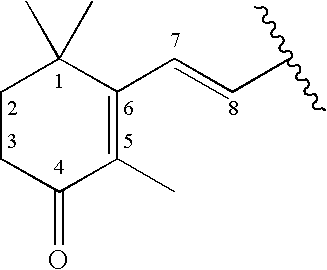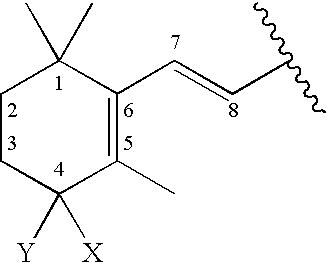Methods of treating hyperproliferative cell disorders
a hyperproliferative cell and disease technology, applied in the field of methods of treating hyperproliferative cell disorders, can solve the problems of cell death, nausea and vomiting, alopecia, myelosuppression,
- Summary
- Abstract
- Description
- Claims
- Application Information
AI Technical Summary
Benefits of technology
Problems solved by technology
Method used
Image
Examples
example 1
[0073] A 39 year old male was diagnosed with acute lymphoblastic leukemia. He 15 received a chemotherapy induction regimen of eight cycles of Hyper-CVAD which consists of the following: Cyclophosphamide 300 mg / mn2 intravenously (IV) over 3 hours every 12 hours for six doses on days 1 through 3, with mesna at the same total dose as cyclophosphamide but given bycontinuous infusion starting with cyclophosphamide and ending 6 hours after the last dose; vincristine 2 mg IV days 4 and 11; doxorubicin 50 mg / 2 IV day 4; and dexamethasone 40 mg daily on days 1 through 4 and 11 through 14.
[0074] In addition, high dose methotrexate-cytarabine (ara-c) was used as follows: MTX (methotrexate) 200 mg / m2 IV over 2 hours followed by 800 mg / m2 IV over 24 hours on day 1; citrovorum factor rescue starting 24 hours after completion of MTX infusion at 15 mg every 6 hours x 8, and increased to 50 mg every 6 hours if MTX levels were more 25 than 20 ,upmol / L at the end of the infuision, more than 1 μμmol / L...
example 2
[0077] A patient suffering from non small cell lung cancer was treated with IRESSA® (250 mg per day) for two months. The disease progressed during the treatment and thae patient was continued on IRESSA® (250 mg per day) with daily dosage of 4-oxo-retinol (75 mg per day) for two months. The disease became stable and the patient continued taking IRESSA® (250 mg per day) for 4 more months without 4-oxo-retinol with a stale disease.
example 3
[0078] Various types of human melanoma, breast cancer and prostate cancer cells will be cultured according to standardized procedures. These cells will be incubated with in the presence of various concentrations of 4-oxo-retinol, growth factor receptor inhibitor (EGF receptor antibody or tyrosine kinase inhibitor), calcitriol or a combination thereof.
[0079] Cell growth of at least some of these cells will be shown to be significantly inhibited in the presence of4-oxo-retinol and growth factor receptor inhibitor as compared with cells incubated in absence of the above compounds or in the presence of each of the above compounds alone.
PUM
 Login to View More
Login to View More Abstract
Description
Claims
Application Information
 Login to View More
Login to View More - R&D
- Intellectual Property
- Life Sciences
- Materials
- Tech Scout
- Unparalleled Data Quality
- Higher Quality Content
- 60% Fewer Hallucinations
Browse by: Latest US Patents, China's latest patents, Technical Efficacy Thesaurus, Application Domain, Technology Topic, Popular Technical Reports.
© 2025 PatSnap. All rights reserved.Legal|Privacy policy|Modern Slavery Act Transparency Statement|Sitemap|About US| Contact US: help@patsnap.com



